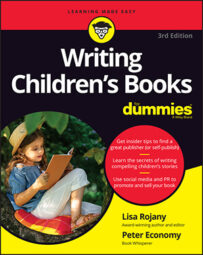When writing a children's book, you need to be aware of a few aspects of good writing: voice, style, and tone. And these are the ones that, unfortunately for writers everywhere, nearly defy instruction.
For example, when you read a particular author and are drawn in by everything you’re reading, so much so that you savor every last page and hate for the book to end, then you have fallen for the writer’s mojo (magic).
Instantly addicted, you search frantically for other books by the same author. You even order her books in advance so that you can get them the second they’re released. That is falling prey to mojo. And as you know in your every cell, every nerve ending, mojo is pretty heady stuff.
So where can you get some? Well, you’re just going to have to develop your own mojo as a writer, just as your favorite writers have, and they do it with three things, which they keep consistent throughout a story:
Voice: The communicative and cumulative effect created by the author’s way of writing. The best books are always written with a voice that’s strong enough to make the protagonist — and the book as a whole — memorable.
Style: The panache with which the writer manipulates the conventions of modern language. In other words, style is the way the author adds his own particular twist to diction (word choice), dialogue, sentence structure, phrasing, and other aspects of the language. Like trends in fashion, style can be sparing and minimalist, outrageous and flowery, terse and evocative, or crisp and formal.
Tone: The attitude the story conveys toward its subject matter. For example, a story may convey an attitude of humor or sarcasm toward its characters and events, signaling to the reader that the material is to be taken with a grain of salt. Then again, it may convey an attitude of sincerity and earnestness through subtle content and language manipulation, thereby telling the reader to take the story seriously.
Capturing your mojo and suffusing your words with your particular tone, style, and voice takes a lot of practice. Beginning writers have so many aspects of writing to ingest and master that developing these other qualities in their writing doesn’t always come easily.
As you write more and more, becoming increasingly comfortable with your abilities and skills, you will most likely find that your mojo starts sneaking into your writing without you knowing it. As time goes on, you may even find that others begin to recognize your style before you do.
Regardless of what you experience, promise yourself to never try to copy someone else’s style or self-consciously force a voice on your writing — that would be cheating the world of the unique voice buried deep within you, just waiting to come out.

